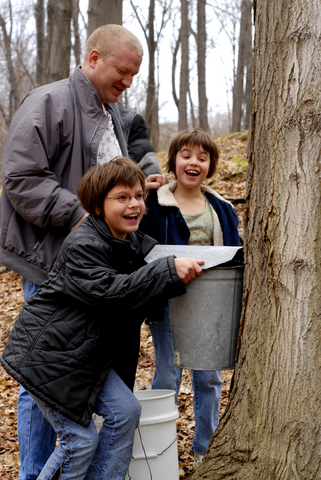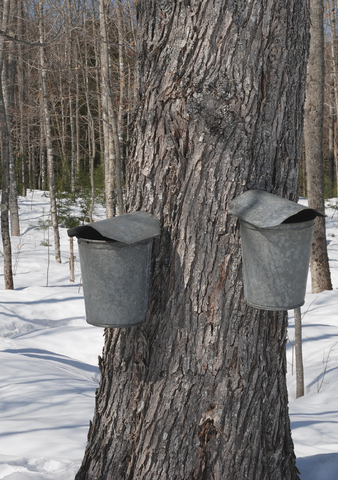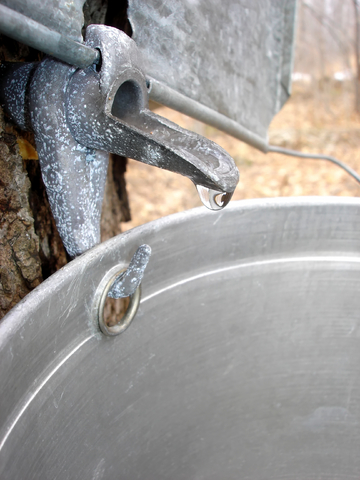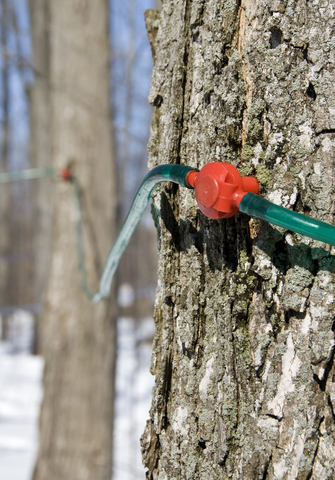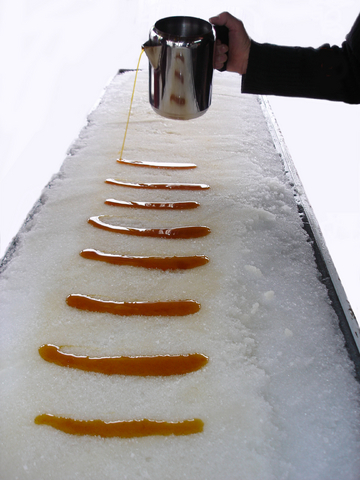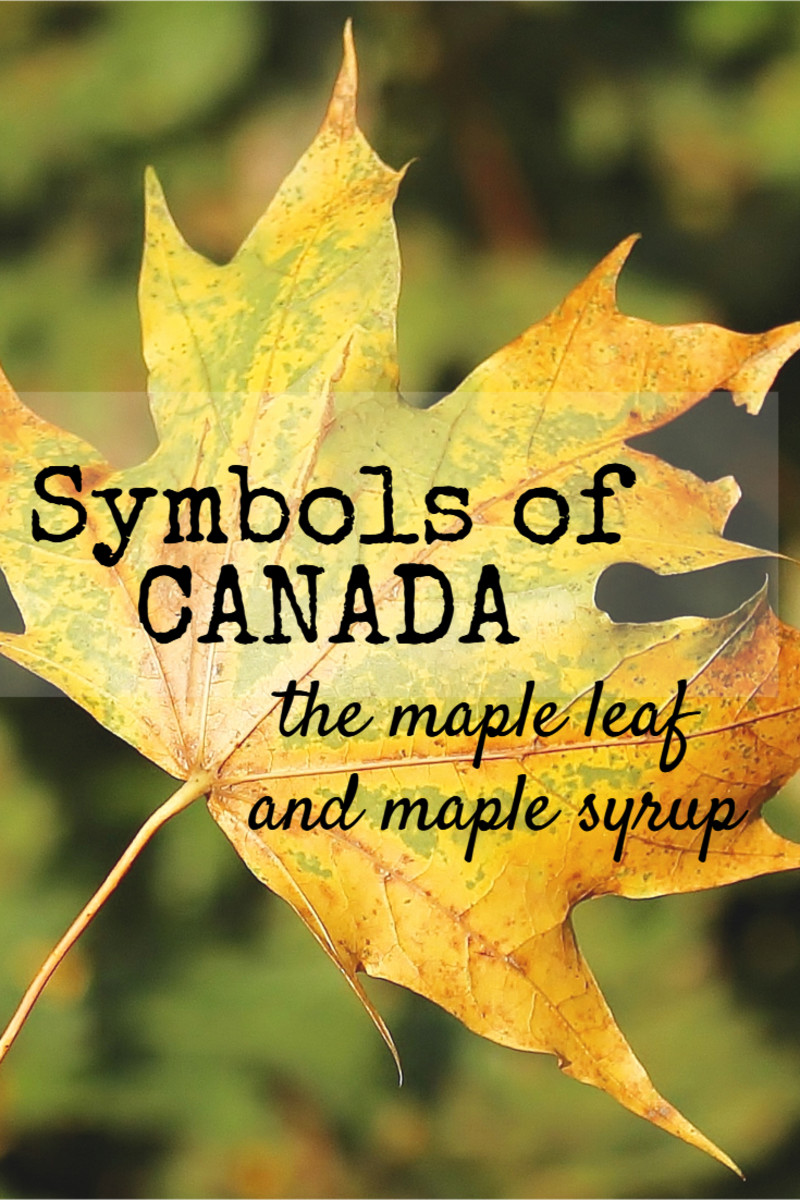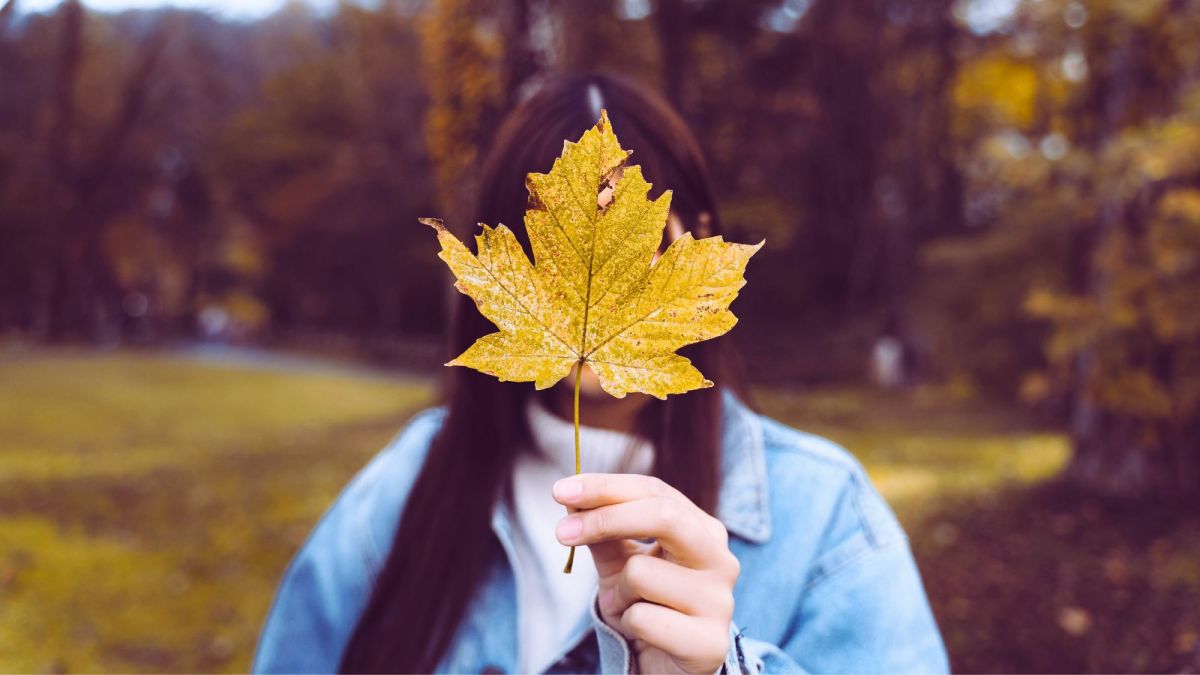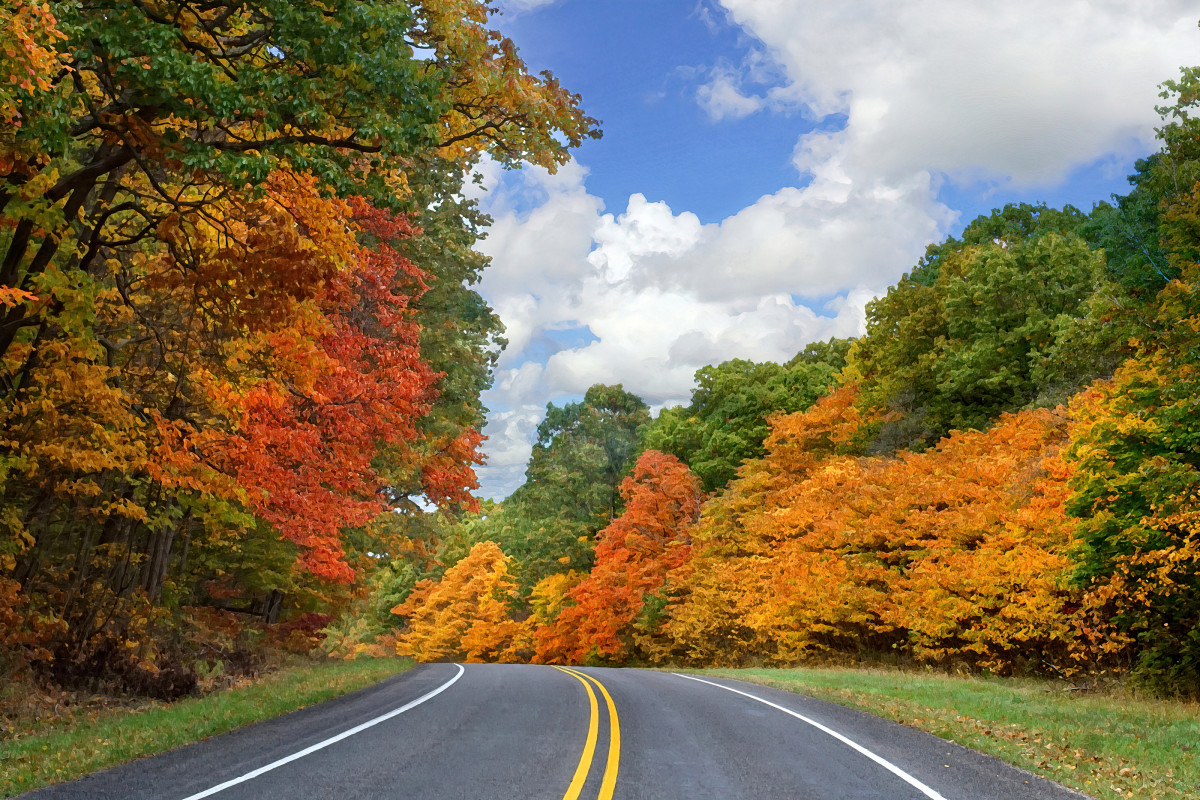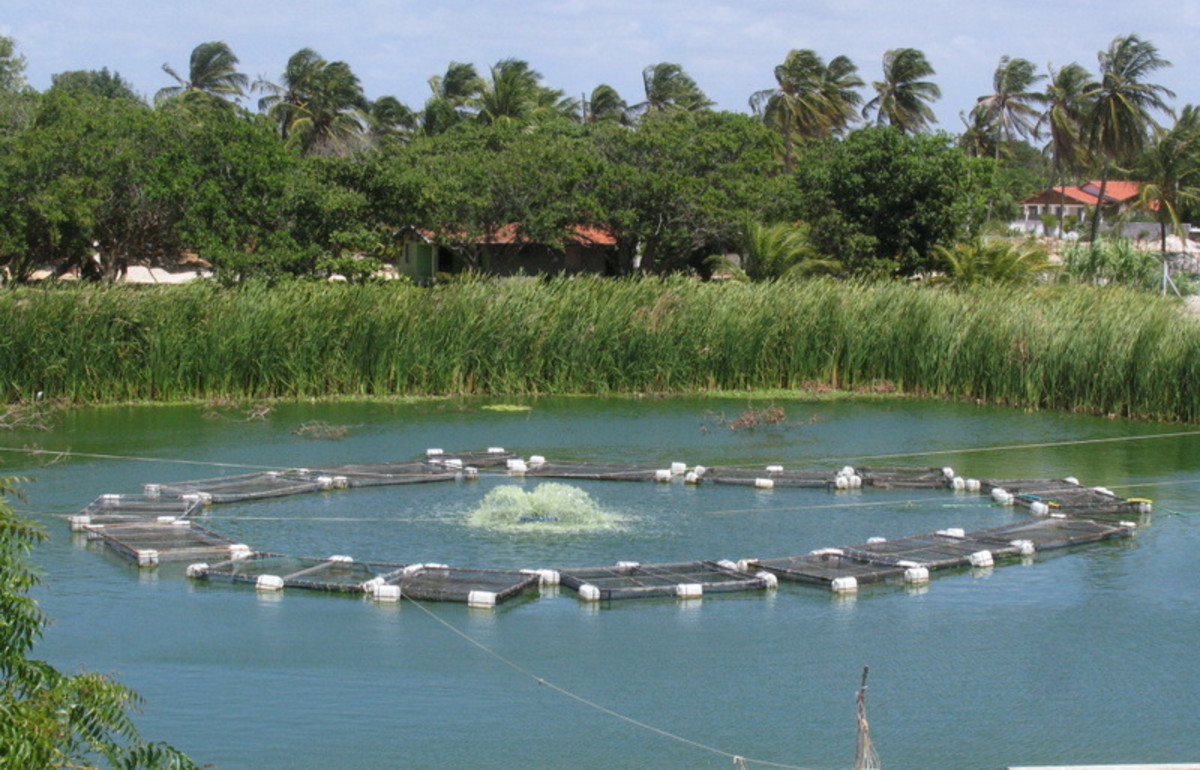Start a Maple Syrup Business
Is a Maple Syrup Business for You?
If you live in an area that is just full of sugar maple trees, perhaps starting a maple syrup business is for you. As a matter of fact, you don't even have to own the trees that you are collecting syrup from, as long as you have the permission of the owner, of course. Collecting maple syrup is a full-time business during the spring of the year and many people who own the maple trees don't necessairily want to be the one collecting and boiling down all of that syrup. Often they'll let you do the collecting as long as they receive some of the end product.
What you do need to be is a self-starter, own the necessary equipment and enjoy being outdoors in the coldest and often wettest time of the year. If this sounds like you, then read on to find out how you can turn this project into cash in the coming year.
Collecting Maple Sap
Click thumbnail to view full-size




Maple Syrup Production: Equipment and Trees
- A good sized area to grow your sugar maple trees - they should be spaced about 15 feet apart. A specific type of maple tree- the sugar maple. These are inexpensive to buy if you purchase seedlings, especially bare rootstock.
- Equipment to collect the
maple syrup- depending upon the size of your operation you may need taps
and buckets or a system of hoses to collect the sap into a collection tank or series of tanks.
- Equipment to boil your own sap and containers to place the finished syrup in.
- A place to sell your syrup- either on your own premises through advertising and word of mouth, farmer’s markets or local stores.
It should also be noted that maple trees are short-lived. They may live from 30-50 years, depending upon environmental factors in your area. Once you have established trees, it may be a good idea to plan for the future and plant new trees to replace the ones that will die off in the future.
How to Tap Trees for Sap
Tapping maple trees for syrup isn’t a difficult process - it can be done with just a few simple tools. The following are the steps you will need to take to tap your trees in the spring when the sap begins to flow.
Tapping supplies:
- Drill with a 7/16 bit for older standard spouts or a 5/16 bit for newer small spouts
- Collection spouts for each taphole
- Food grade collection containers (buckets, bags or tube line)
The exact month you begin tapping depends upon the state in which you live. You want to tap before the earliest run begins, which may be as early as February.
Trees should be measured in the fall and marked so it will be easy to identify them in the winter months. Trees to be tapped should be no smaller than 10 inches in circumference at four feet above the ground. Most experts agree that a tree should have no more than 2 taps in it in order to keep it healthy.
Once you’ve selected the trees to tap, drill a 2-inch hole where the tap will be, using a slightly upward angle. This will facilitate the process of the downward flow of sap.
Place a tap in the hole and gently tap it into place with a rubber mallet or hammer. Attach the bucket, bag or tubing to the spout. Make sure to cover any open buckets with a cover to keep rainwater and debris from the sap.
How-to Book on Tapping trees and Making Maple Syrup
When to Collect Maple Sap
Collecting maple sap may be a busy activity or a slow one, depending upon how many trees have been tapped, the method of collection and the type of weather you are having. There may be days when you’ll be busy collecting a lot of sap, and others when you’ll find no more than a couple of drops of sap in your collection apparatus.
Sap flows quickly when there is freezing temperatures during the night and then a very warm day following. This will stimulate the flow of sap. In some locations, this can occur in February, whereas it may not occur in other locations until March. If you’re unsure of when this will occur, either follow the weather very closely or consult with a local Cooperative Extension agent or other syrup producers. The best advice is to make sure your trees are tapped early so that you’ll be prepared in any event.
Best Practices for Sap Collection
I've Collected the Sap. Now What?
Once you've collected several gallons of maple sap, it either needs to be boiled down into maple syrup soon or it can be sold to other area sugar shacks who buy the raw product. If your intent is to sell the sap, scope out the local producers to find out who offers the best price for the sap before selling it.
For those in the business for the long haul, investing in professional equipment is a must. If your budget is tight, used equipment may be found locally or online. Most individuals who do this for several years eventually set up their own sugar shack and begin producing maple syrup and other maple products, such as maple sugar, maple sugar candy and maple taffy.
In order to turn a profit, most maple sap producers have collect syrup from 700 or more taps each year, either on their own property or on other people's property that they have contracts with.
Further Information on the Maple Syrup Business
- Build your own Reverse Osmosis system for maple syrup
- Maple Syrup - Pure Maple Syrup - New York State Maple Producers
- How to Make and Market Maple Syrup
If you live in the northeastern quarter of this country and have access to one or more hard maple trees, you've probably thought about making maple syrup.
Maple Syrup Evaporator
© 2009 Charlotte Gerber

